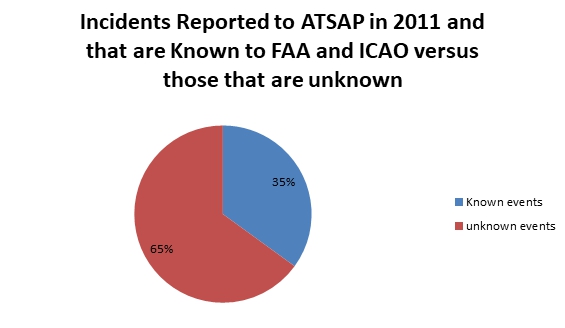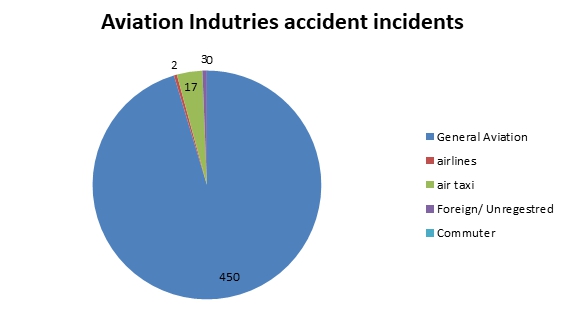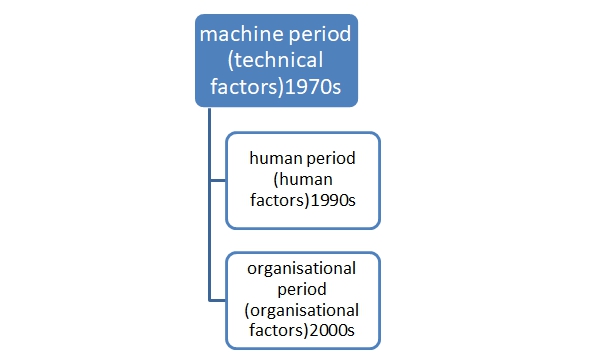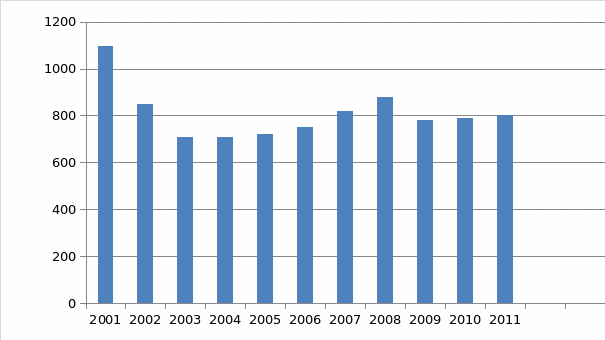Statement of the Project
The report based on this project is going to analyze the use of safety management systems (herein referred to as SMSs) in the aviation industry both among the military as well as the civilian airlines. The two bodies work together to enhance daily activities without compromising each other. The report found out that the project exhibits a mutual relationshipbetween the two parties. For instance, players in the aviation industry are most likely to use the same facilities in the surrounding.
For this paper to be effective and achieve the purpose intended, the author is going to first outline the plans and procedures that the aviation industry is intending to put in place for the sake of safety in the field. This will be followed by a deeper analysis of the plans and procedures put in place so that the credibility of the operations is maintained.
The safety systems’ plans and procedures are to be in accordance with regulations put in place by the two bodies formulated to oversee the safety management practices in the aviation field. These are the Federal Aviation Administration (also known as FAA) and the International Civil Organization (also known as ICAO).
The author of this paper will compare the two bodies (FAA and ICAO) and analyze the requirements of the two organizations when one wishes to engage in the aviation industry. The two agencies will also be analyzed in terms of similarities and differences in their efforts to control the choking aviation industry. Their duties as well as strengths and weaknesses will also be put into perspective.
The author will also analyze other related organizations that work hand in hand with the agencies. This is for example the Occupation Safety and Health Administration (also known as OSHA) and the various stipulations it provides for the aviation industry. Following the regulations that are put in place by these organizations goes a long way in harmonizing operations between civilian and military aviation (Federal Aviation Administration [FAA], 2010).
Program Outcomes Addressed
FAA description of the SMSs
Safety management systems provide an integrated and systematic way to manage air traffic control safety. Elements of the FAA safety management systems include policy, architecture, assurance and safety promotion.
System
SMS is the functional framework that is used for safety management. It is the combination of the interrelated and interacting elements in an organization which function to achieve identified objectives. It can also be viewed as a system that can modify its operations for the achievement of anti-entropic ends. In designing the system, it is essential to focus on context, process, and function perspectives in order to comprehend the whole.
At first, the approach focused on structure but later the emphasis shifted to functions and objectives. Afterwards, this was followed by total quality management that focused more on process and control. The three perspectives together with the environment are collectively exhaustive, mutually exclusive and interdependent. Classification, method and model are therefore related. These notions are taken into account when designing SMSs for both civilian and military aviation (FAA, 2011).
Management
In safety management endeavors, how safety is defined determines the means and objectives of management. Management is concerned with the control of the system’s functions towards the achievement of the safety goals. It is a process that requires resources, actionable data, means and goals.
The FAA point out that safety is the managerial process that is shared between government regulators and service providers or aviation operators. The implication is that the management of safety is about organizations that control safety through the handling of risk and performance and not about a human operator.
Peterson (2008) is of the view that safety management in the aviation industry is successful when it is independent, involved, informed, and informative. The results of the four aspects should undergo constant evaluation to find out how they affect the processes, functions and structure of the SMS.
Safety
Safety operationalisation should provide ways of measuring and ‘controlling safety’. On the basis of manageability, regulatory organizations such as FAA and ICAO transform safety into a risk that is acceptable. Factors that are likely to cause accidents and severity of outcomes can be analyzed. In this regard, safety management is actually risk management. Much of the emphasis for FAA and ICAO, while defining safety, is on risk management.
The FAA further introduces the aspect of safety assurance in order to apply an approach of quality management. Generally, safety can be regarded as the absence of undesired outcomes. This definition is wide enough to create room for more perspectives on the issues that affect safety. But it has to be specified to meet the needs of safety management in the aviation industry. The general definition supports a safety perspective in various departments of an organization such as the health and safety office and aircraft maintenance.
Bos & Caldwell (2007) posit that safety should be considered as a dynamic non-event. It is more of a culmination of sophisticated processes than a function of fixed parts. Accidents are the results of disharmony or dysfunctional interactions and disturbances between components of the system.
Thus, safety can be regarded as a problem that emanates from control deficiencies. The objective of safety management is therefore to control the process performance of systems and sub-systems. When safety is considered as a problem with control, a control theory perspective is used for safety management and in formulating safety and accident models.
The Airspace Conflict
In the recent past, military aviation activities have endangered air routes and greatly inconvenienced civil aviation. One of the most notable events that highly affected the operations of civil aviation was the firing of nuclear missiles in Korea on the 5th of July 2006 by the military.
The missiles crossed international air routes and close extrapolation found that the firings had crossed air routes over the Pacific Ocean and Japan. Annex 11 of the Chicago Convention outlines the manner in which military activities in the airspace should be managed to ensure they do not conflict with civil aviation (Bos & Caldwell, 2007).
The second chapter of the Annex explains the relationship between ATS and the military. The two are supposed to cooperate and take responsibility for any occurrences that may interfere with civil aviation. Because of the importance of both military and civil aviation, there should be SMSs that manage the airspace as a whole. Because the airspace is very essential for both parties, there should be minimal restrictions on access and usage.
Cooperation between the military and civilian aviation authorities is made more urgent because of the fact that airspace resources are subjected to a lot of strain due to the growth in international air travel. This cooperation is not only about sharing airspace but also efficient airspace allocation especially in the case of military flights that operate under special-use airspace. This implies that there is supposed to be cooperation between authorities in the military and those in the air navigation service.
The International Air Transport Association (IATA) is currently calling for the establishment of a cooperation that is similar to that of the Single European Sky legislation. The SES applies to all European Union countries and other states that surround the EU. This legislation is complimented by a program that runs the infrastructure’s modernization program in EU air traffic control.
ICAO Initiatives
The ICAO has put several measures in place to ensure the harmonious coexistence between military and civil aviation. One of the most recent initiatives is the Global ATM (air traffic management) Operational Concept. This concept portrays a harmonized, integrated global ATM system.
ICAO has also provided guidelines on coordination of activities between ATS and military authorities. The guidelines point out that when there is a sudden armed hostility outbreak, the ATS and State authorities, pilot in-command and other aircraft operators should assess the scenario on the basis of available information. Their actions should be planned in a manner that does not jeopardize safety (Bos & Caldwell, 2007).
These guidelines outline that when a civil aircraft is approaching a region that the military has designated as a ‘dangerous’ area, restricted, or prohibited or any other area that may be considered potentially hazardous, the ATS unit that is responsible should issue a warning to the civil aircraft. This warning should include information on how to head away from the area.
In the event that it is not possible to communicate with the ATS unit, the military unit should transmit a warning to the aircraft through VHF emergency channel 121.5 MHz. The warning given to the civil aircraft should emphasize on the appropriate change of path. The reason is that uncoordinated warnings may culminate in more risk to the aircraft, especially collision with another plane (Bos & Caldwell, 2007).
Prevailing Trends in the Aviation Industry
The current situation in the aviation industry is characterized by increased flight operations on a daily basis. The reported trends include:
- Incidents and accidents
- Complying with the regulations
- More barriers due to the increased number of players in the aviation industry
- New hazards
- Improving the current safety management system
Figure 1: Types of Incidents that Involves SMSs’ Interventions
Source: FAA (2011)
Figure 2: Negligence of SMSs and the Consequences
Source: FAA (2011)

For these issues to be addressed effectively, the military and the civilian operators ought to work together for effective implementation of the identified strategies.
Data Collection
The aviation industry has several advantages over other modes of transportation in the world. For example, it is regarded to be one of the safest as compared to the others. However, accidents still happens and there is need to address the problem in attempts to reduce the number of casualties and avert accidents as a whole. Proactive measures that are in place have to be scrutinized and their effectiveness analyzed to determine whether they are fit for the operations. The information and data for this report was obtained from reports that recorded the various accidents in the aviation industry and the trends of flights in the market (Peterson, 2008).
The reliability of information is ensured as it was derived directly from aviation literature and reports that were compiled after catastrophic events occurred in the sector. The figure below explains the trends of the incidents reported in the past few years:

Figure 5: Some of the Incidents that have Taken Place Due to Lose Safety Measures
Source: FAA (2011)
Findings of the Report
The research was carried out to confirm the many incidences experienced in the aviations industry involving stakeholders from both the civilian as well as the military sectors. The findings are overwhelming and depict the fact that the aircraft is considered to be the most efficient mode of transport. In spite of this, incidents that pose a threat to the safety of the sector have been reported in the past (Wetmore & Przetak, 2006).
It is noted that as the aircrafts takeoff and even land, the SMSs have been ignored and the situation has resulted to hazardous incidents. Such incidents have even led to fatal accidents in the aviation industry. Surface areas around the airport have been left unattended and wrought with confusions as the pilots and the control tower operators disregard the importance of ensuring the safety provisions are followed to the letter (FAA, 2011).
At the beginning of this report, the author indicated the plans that are underway and which have been initiated by both the FAA and ICAO. Some of them include;
- The most recent strategies that FAA has implemented to make sure that the safety measures in the terminal area are efficient
- Recent trends in the terminal area (either surface or airborne) that contribute to the hazardous threats
- Further actions that the two urgencies opt to undertake following the recent incidents
The current problems are different from what happened several decades ago. The findings of this report will first address the nature of the safety challenges encountered in the past and in recent times.

Proposed Structures and Policies
The overall gain of employing safety mechanisms in the aviation industry is enhanced and efficient service delivery. This incorporates systematic, proactive as well as properly defined SMS strategies to address the increased threats in the aviation industry.
Forecast reports indicate there will be increased air transport hence the importance of new measures to respond to the frequent incidences emanating from the operations of the aviation industry (Bos & Caldwell, 2007). Rule making is one of the structures initiated by FAA and ICAO to ensure that all airports- including military facilities- operate within the stipulated safety measures.

Safety Management System Proposal for the Military and Civilian Aviation Industries
The SMSs are vital requirements for the efficient operation of the aviation industry and it encompasses policies and procedural approaches to oversee the safety measures. One major objective of this move is to come up with a structured management system to look into risk management procedures. All these take into account the organizational level and the nature of all stakeholders involved in undertaking the safety processes (Bos & Caldwell, 2007).
For the process to be effective, SMSs needs to be planned, organized, communicated, and finally used in providing direction when responding to safety issues. The safety measures are initiated by putting in place the governing policy to which the military and civilian operators are expected to adhere (Bos & Caldwell, 2007). Several simple proposals are put in place to make sure the safety measures are easily achieved. These are;
- Safety policy
- Safety assurance
- Safety improvement
- Safety culture
Recommendations on the SMSs and their Impacts on Human Life
For personal growth, quality of life needs to be given priority over anything else. Different incidents that happened in the past can be analyzed so that the current and future occurrences are controlled. New flights that are coming into the market should be capable of adapting to the challenges that flights experienced in the past (Bos & Caldwell, 2007).
The agencies that are involved in flight dispatch have the challenge of reviewing the policies constantly with the increased usage of the aviation industry. Civilian aviation is constantly evolving with personal crafts operated by private pilots and which are choking the airspace. As such, there is a need to go back to the drawing board and review the aviation regulations to meet the current scenario in the market (Bos & Caldwell, 2007).
Aeronautical Science
This is the general science that is involved with the designing and construction of aircrafts. It also stretches to include the nature and use of aircrafts such as rockets, spacecraft, and so on. There are flights that stay in the earth’s atmosphere and there are those that fly outside the atmosphere. Generally, the discipline transcends aerodynamics, propulsion, avionics manufacturing and many other different fields which come together to establish a common ground for safety measures (Wetmore & Przetak, 2006).
The field is well acquainted with SMSs and there is demand to produce flights that strike a balance between performance based on the technology at their disposal and the cost of manufacture. Costing means that the cheaply manufactured planes may not adapt effectively to the environmental changes and maneuvering capabilities. As such they may impact negatively on SMSs practices (Wetmore & Przetak, 2006). Aeronautical scientists develop new ways to be used in the aviation industry for both civilian and military systems.
Aviation Legislation and Law
The main difference between the operations of civil and military aviation is that they utilize the same airspace in diverse ways. The difference is what led to the adoption of the Assembly Resolution A10-19 which focused much on the mandate of ICAO to manage safety in the skies while recognizing that the airspace and other services and resources are shared between the military and civil aviation (FAA, 2011).
Another important legislation is the Assembly Resolution A36-13 which was adopted during the thirty sixth ICAO Assembly. This particular legislation recognizes that many resources and facilities including the airspace should be used commonly by military and civil aviation. It adds that the management of the skies should be flexible.
This common usage is to be arranged to ensure efficiency, regularity, and safety of international air traffic. The activities of member states are thus not supposed to interfere with the efficiency, regularity and safety of international air traffic and should conform to the stipulations of Chicago Convention’s Annex 2. The resolution also pointed out that the ICAO council would guide and advice member states who wished to formulate military-civil agreements (FAA, 2011).
Air Safety
Air safety comprises of a number of issues that pertains to flight failure and controlling such failures in the future. The prevention of such failures is achieved through training and educating of the public on how to behave in case of such incidences. There are a number of factors that threaten the air safety for both the military and civilian aircrafts. These include;
- Foreign objects and debris
- Misleading information as well as insufficient information both on the surface and on air
- Military action in the event of criminal acts such as terrorism
- Weather conditions like lightening, ice, snow and so forth
- Fire outbreak during a flight
- Structural failure during a flight
- Accident survivability
The above threats have been addressed by different agencies across the globe to make sure that necessary actions are undertaken in case of such events. The partnership brings together the operators, regulators, manufactures, agencies and other concerned stakeholders who contribute to the formulation of air safety strategies (Stringer, 2006).
Some major contributors to air safety (such as Commercial Aviation Safety Team [CAST] and European Strategic Safety Initiative [ESSI]) have been created to reduce air fatalities in the world by 80%. With the contribution of aviation regulatory bodies like the FAA and ICAO, air safety is expected to take a new form by 2013 (Bos & Caldwell, 2007).
Conclusion
As indicated above, there are safety management systems that have been put in place to ensure harmony between military and civil aviation. Nonetheless, there are still some loop holes such as the lack of clarity in some regulations. This is for example the Chicago Convention’s Article 89 which lacks effect and certainty.
The other area that has been a cause of many debates among different stakeholders is testing of missiles like in the Korean 2006 case. This particular case led to outcry from many nations and organizations such as the ICAO and the UN Security Council which had to organize an urgent meeting.
However, in spite of the Resolution 1695 that was formulated after the incident, the country went on to fire another missile in May 2009. Although Chicago Convention’s Article 1 recognizes the airspace of a nation as a sovereignty entity belonging to that nation, some regulations have to be put in place to protect the civilians of many nations who are passing over the skies of such nations.
This is given the fact that it is not only the nation under the airspace which makes use of the same. Other countries around the world use the airspace to access other regions of the world. As such, it is important to ensure that the airspace in such a case is safe for military and civilian aviation originating from the nation and other parts of the world.
References
Bos, P., & Caldwell, W. (2007). System safety application: Constructing a comprehensive aviation system safety management model (ASSMM). International Journal of Applied Aviation Studies, 7(1), 28-45.
Federal Aviation Administration. (2010). Advisory circular 120-92 (AC120-92): Introduction to safety management systems for air operators. Washington, DC: U.S. Government Printing Office.
Federal Aviation Administration. (2011). Advisory circular 150/5200-37: Introduction to safety management systems (SMS) for airport operators. Washington, DC: U.S. Government Printing Office.
Peterson, D. (2008). Safety management: A human approach. Goshen, New York: Aloray Inc.
Stringer, T. (2006). Action research: A handbook for practitioners. Thousand Oaks, California: Sage.
Vincoli, J. (2008). Basic guide to system safety. New York: Van Nostrand Reinhold.
Wetmore, M., & Przetak, R. (2006). A new approach to enhance airline safety: Using system safety techniques. Journal of Air Transportation, 11(2), 113-139.